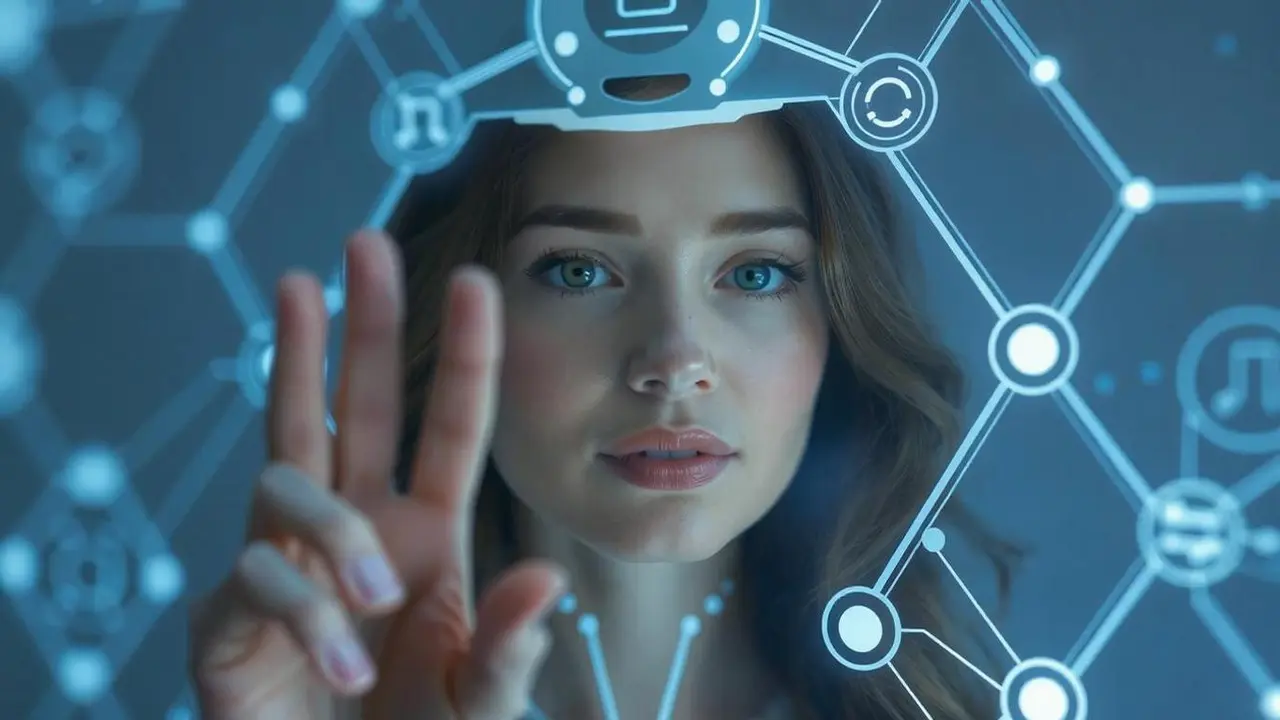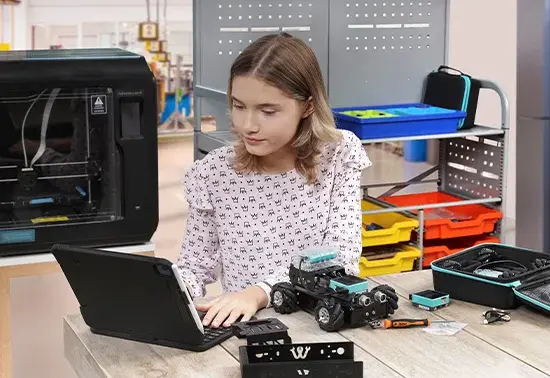In a world rapidly evolving with technology, Artificial Intelligence of Things (AIOT) is transforming education in unprecedented ways. Integrating AIOT with STEM education offers unique opportunities, making learning more interactive, personalized, and effective for students.
Understanding AIOT: The Basics
AIOT, a synergy of artificial intelligence and the internet of things, is revolutionizing how devices communicate and collaborate. But what exactly does this mean for education? Let’s dive into the foundational ideas shaping AIOT.
To understand the impact of AIOT in education, it’s essential to explore its core components: data, connectivity, and intelligence. Data generated by various devices forms the backbone of AIOT, providing the raw material for intelligent analysis and decision-making. Connectivity, facilitated through modern networking technologies, allows different devices to communicate seamlessly. This interconnected network can range from simple classroom tools to sophisticated systems that support entire educational infrastructures. Finally, intelligence comes from embedding AI capabilities within devices, enabling them to perform complex tasks such as personalizing learning resources or predicting educational outcomes. By utilizing these core components, AIOT transforms traditional educational frameworks, making them more dynamic and responsive to the needs of students and educators.
As schools increasingly adopt AIOT technologies, the educational landscape is becoming more interconnected and adaptable. For instance, AI-driven data analytics can offer insights into student performance trends, allowing for tailored interventions. Teachers can use real-time data to adjust lesson plans that accommodate different learning styles, effectively bridging the gap between technological capabilities and educational outcomes. Moreover, the adoption of networked learning systems facilitates collaboration between students and teachers across geographical boundaries, creating a more inclusive and global learning environment.
Implementing AIOT in education requires not only technological infrastructure but also a shift in mindset. Educators must be ready to embrace change, focusing on continuous learning and skill development. This shift also involves updating curricula to include emerging technologies and digital literacy, preparing students for future technological demands. Institutions like EdNex, as discussed in their AI Robotics Lab solutions, exemplify how AIOT can build transformative educational ecosystems.
The Role of AIOT in STEM Education
By integrating AIOT into STEM curricula, we open a plethora of new learning possibilities. Imagine classrooms where data-driven insights adapt to the needs of each student, making complex subjects accessible and engaging.
AIOT’s integration into STEM education goes beyond mere technological enhancement; it restructures how concepts are taught and understood. For instance, interactive simulations powered by AIOT can demystify complex scientific principles by providing visual and experiential learning opportunities. This way, abstract concepts like chemical reactions or physical mechanics become more tangible for students, enabling a deeper understanding and appreciation of the subjects at hand. Students are encouraged to engage with the material dynamically, fostering curiosity and exploration.
Embracing AIOT in STEM also prepares students for real-world problem-solving by offering tools and platforms for hands-on learning. Through AIOT-enabled lab solutions, such as those offered by EdNex’s IoT Lab Solutions, students can embark on projects that simulate real-life scenarios. These projects may involve designing smart systems or automating tasks, providing practical experience in working with interconnected technologies. Such practical involvement can inspire students to pursue careers in STEM fields, equipped with the necessary skills and mindset to tackle future technological challenges.
Enhancing Personalized Learning
AIOT significantly elevates personalized learning strategies. With real-time data and adaptive learning systems, students can enjoy an educational experience tailored specifically to their personal learning speeds and preferences.
Personalized learning with AIOT leverages the power of AI to create adaptive educational experiences. As each student interacts with learning materials, AI algorithms assess performance and tailor content to individual needs. This level of personalization can help students who struggle with certain concepts by providing additional resources or alternative explanations. Conversely, it can challenge advanced students with more complex tasks, keeping them engaged and motivated. Personalized learning pathways are crafted in real-time, ensuring that all students receive the support and challenge they need to succeed.
Furthermore, the ability of AIOT to adapt to various learning environments means it can be equally effective in classroom settings and remote learning scenarios. With tools like those offered in the Arduino Education Starter Kit, educators can facilitate personalized learning whether students are physically present in the classroom or learning remotely. This flexibility enhances accessibility, making it possible for students from diverse geographic and socioeconomic backgrounds to reap the benefits of tailored educational experiences. Personalized learning thus becomes a gateway to equality in education, providing all students with the opportunity to thrive.
Creating Interactive Classrooms with AIOT
Interactive classrooms powered by AIOT devices foster a more engaging learning environment. From smartboards to virtual labs, students experience hands-on learning, making education more dynamic and interactive.
The use of AIOT in classrooms transforms passive learning into an interactive adventure. By integrating cutting-edge technologies like augmented reality (AR) and virtual reality (VR), educational content can be brought to life. Students are no longer mere recipients of information; instead, they actively participate in the learning process. For example, AIOT-enabled smartboards can facilitate real-time collaboration and hands-on experiments, even across different locations. Such an approach promotes a participatory culture in classrooms, encouraging students to actively engage with the learning material and their peers.
Incorporating AIOT in classrooms offers educators powerful tools to design immersive educational experiences. Teachers can utilize AIOT platforms to create virtual field trips, bringing places like historical sites or natural ecosystems directly into the classroom. This not only excites students but also creates contextual learning opportunities that can enhance comprehension and retention. As these technologies become more common, learning becomes more than an act of information absorption; it evolves into a rich, experiential journey that resonates with curiosity and exploration.
Preparing for a Tech-Driven Future
The future workforce will demand strong tech skills. AIOT provides students with a head start, equipping them with the necessary tools and knowledge to thrive in future job markets influenced by advancing technology.
As industries rely more on technology, demand for professionals equipped with STEM and AIOT skills is rapidly increasing. AIOT education doesn’t just stretch students’ learning capabilities; it prepares them for future roles as innovators and leaders. For example, students exposed to AIOT principles understand how to collect and interpret large datasets, a skillset in high demand across various industries including healthcare, finance, and engineering. These insights prepare students to contribute meaningfully in their professional endeavors, equipped with a practical understanding of modern technology.
In particular, AIOT education instills a mindset of innovation and creativity. Learning frameworks enriched with AI technologies in STEM education provide a launchpad for students to experiment, create, and refine ideas. With exposure to AIOT learning tools, students engage in an iterative process of problem-solving and development, crystallizing the concept of lifelong learning that is beneficial for sustainable career growth. As students delve deeper into AIOT applications, they realize that their learning journey extends beyond formal education, driving them to independently explore evolving technology frontiers.
AIOT gives students not only technical prowess but also critical thinking and adaptive skills, crucial for navigating future uncertainties. By mastering AIOT applications in education, students learn to leverage technology intuitively, enabling them to adapt quickly to changes and seize emerging opportunities. AIOT’s role in STEM education sets the stage for a tech-savvy generation ready to lead in an era shaped by relentless technological advancement.
Embracing Innovation for Future Learning
As we look forward, the integration of AIOT in STEM education promises a transformative journey, empowering students and educators alike to explore, learn, and innovate. Embracing these technologies can unlock potential and elevate learning experiences, preparing students for an ever-evolving world. For more information about AIOT solutions, visit our homepage.









Leave A Comment